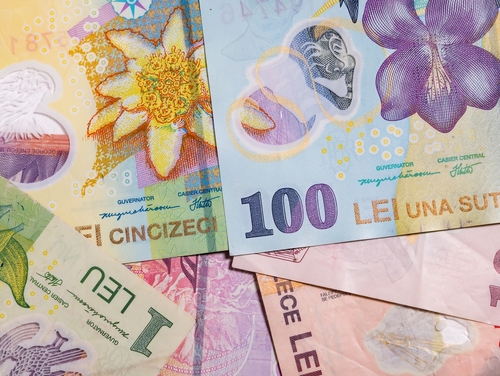Romania is a cultural gem in Eastern Europe, known for its rich history, stunning landscapes, and vibrant traditions. While the country is a member of the European Union, it has yet to adopt the euro (EUR) as its official currency. Instead, Romania continues to use its national currency, the Romanian leu (plural lei).
Whether you’re planning a trip to Romania or looking to send money to loved ones there, understanding the leu’s history, denominations, and unique features is vital. This guide dives deep into the leu’s story while offering practical tips for currency exchange and transfers.
What You Need to Know About the Romanian Leu
Romania’s national currency is the leu, abbreviated as RON (Romanian new leu) and often denoted with the symbol L. The leu is subdivided into 100 bani (akin to cents). Despite its historical and cultural significance, the leu is expected to be replaced by the euro in the near future as Romania aims to join the eurozone.
Quick Facts About the Romanian Currency
- Currency code: RON
- Symbol: L
- Subunit: 1 leu = 100 bani
- Denominations:
- Coins: 1, 5, 10, 50 bani
- Banknotes: 1, 5, 10, 50, 100, 200, 500 lei
Through centuries of change, the leu has remained a part of Romania’s identity. But what makes this currency truly unique?
5 Interesting Facts About Romanian Money
1. Leu Means “Lion”
The word leu directly translates to “lion” in Romanian. While the currency itself doesn’t feature lions, its name has fascinating origins in the Dutch Leeuwendaalder, or “lion thaler”—a silver coin that circulated widely through Eastern Europe in the 16th and 17th centuries. Over time, Romanians adopted the term “leu” for their currency, even as the coins disappeared.
2. A Note for a Musical Legend
Romania celebrates its cultural icons through its currency, and no figure is more prominent than George Enescu, the world-renowned composer, violinist, and conductor. Enescu’s portrait appears on the 5-lei banknote, alongside a violin and musical notes.
Born in 1881, Enescu is considered one of Romania’s greatest musicians, celebrated for his Romanian Rhapsodies and contributions to classical compositions. The 5-lei note honors his contributions to Romania’s rich musical history.
3. Durability That’s Hard to Beat
Romanian banknotes are almost indestructible. Made from polymer, these notes can resist water, tearing, and general wear and tear. Thanks to this material, the notes remain vibrant and in circulation far longer than traditional paper currency. The choice of polymer also helps prevent counterfeiting, making Romanian currency particularly secure.
4. An Interactive App Showcases Its Currency
The National Bank of Romania has developed an app, Leul Românesc, allowing users to explore the leu in greater detail. Through the app, you can view banknotes, learn about their security features, and even take quizzes to test your knowledge of Romania’s currency. It’s a great tool for travelers and history buffs alike.
5. Romania Prepares for the Euro
While the leu continues to circulate, Romania has plans to replace it with the euro. Although no specific date is set, Romanian officials aim for euro adoption once necessary economic and fiscal conditions are met. When this time comes, Romanians will be able to exchange their lei for euros during a transition period determined by the Romanian National Bank.
A Brief History of the Romanian Leu
The Romanian National Bank (RNB) has overseen the country’s currency since its founding in 1880. The RNB played a critical role in several pivotal moments for Romanian currency, particularly the transition from the old leu (ROL) to the new leu (RON) in 2005.
From ROL to RON
Prior to 2005, the old leu (ROL) suffered from high inflation, creating the need for re-denomination. One new leu was equivalent to 10,000 old lei, simplifying financial transactions and correcting the effects of inflation.
The modern leu now includes banknotes ranging from 1 leu to 500 lei. Common coins in circulation include 1, 5, 10, and 50 bani. The currency’s relatively low denominations reflect efforts to maintain economic stability since the re-denomination.
Current Denominations
Coins
- 1 ban (yellow, brass-plated steel): Simple and practical, though rarely used.
- 5 bani (red, copper-plated steel): Small and recognizable.
- 10 bani (white, nickel-plated steel): Lightweight and key for small transactions.
- 50 bani (brass): The largest coin denomination, frequently issued as commemorative coins.
Banknotes
- 1 leu (green) features Romania’s Coat of Arms and Nicolae Iorga, a historian.
- 5 lei (violet) celebrates George Enescu, alongside a violin design.
- 10 lei (pink) honors painter Nicolae Grigorescu.
- 50 lei (yellow) commemorates Aurel Vlaicu, a pioneering Romanian aviator.
- 100 lei (blue) features playwright Ion Luca Caragiale along with theater masks.
- 200 lei (orange) pays tribute to Lucian Blaga, a poet and philosopher.
- 500 lei (blue) highlights Mihai Eminescu, Romania’s national poet.
Each banknote is distinct in its use of vibrant colors, polymer material, and depictions of national heroes.
Romanian Leu Exchange Rates
The exchange rate for the Romanian leu fluctuates depending on global and local economic trends. For reference, rates may range significantly against major currencies like the euro (EUR), U.S. dollar (USD), and British pound (GBP).
It’s important to check the current exchange rate on resources such as the Remitly app or the National Bank of Romania’s website before making transfers or currency exchanges.
Tips for Exchanging and Handling Lei
If you plan to visit Romania or send money home, here are some useful tips to handle the Romanian leu effectively.
Exchanging Money
-
Avoid Airport Exchanges
Exchange kiosks at airports typically offer disadvantageous rates. Money exchange offices in city centers or banks are better alternatives. -
Use ATMs
ATMs across Romania dispense cash in leu. They usually offer competitive exchange rates but may incur additional fees for international cards. -
Carry Low-Denomination Bills
Some businesses, particularly in rural areas, might reject large bills like 500 lei. Request smaller denominations when exchanging money.
Keeping an Eye on Counterfeits
Due to the security features of Romanian currency (e.g., watermarks, raised ink), counterfeit bills are rare. However, it’s important to examine your cash for authenticity, especially when exchanging currency at independent kiosks.
FAQ About Romanian Currency
What is the currency of Romania?
Romania’s currency is the Romanian leu (plural lei), abbreviated as RON.
Will Romania adopt the euro?
Yes, Romania plans to adopt the euro in the future, though no specific timeline has been finalized.
What denominations are in circulation?
Coins include 1, 5, 10, and 50 bani, while banknotes range from 1 leu to 500 lei.
Where can I exchange lei?
You can exchange lei at banks, exchange offices, and ATMs in Romania. For travelers, bringing euros to exchange locally may offer better rates.
Is Romanian money waterproof?
Yes, Romanian banknotes are made from durable polymer, making them water-resistant and difficult to tear.
What’s the best way to send money to Romania?
Reliable transfer services like Remitly offer fast and affordable ways to send funds directly to Romanian bank accounts or for cash pickup.

